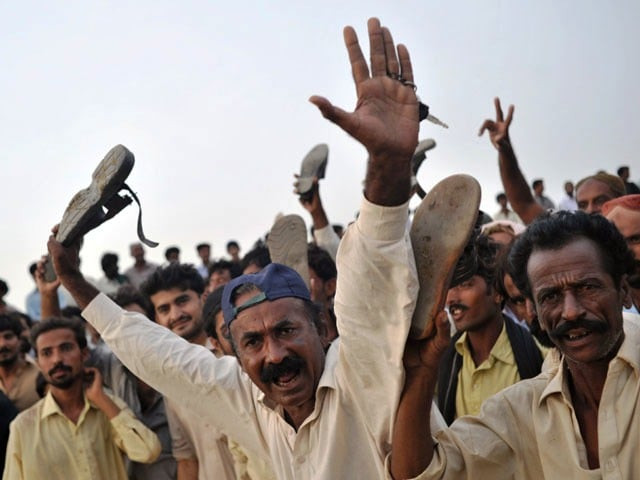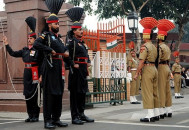Flood victims protest, diseases on the rise
Angry flood survivors in Sukkur protested against the acute shortage of food and other relief goods on Tuesday.

The flood affected people of Kandh Kot, Ghauspur and Jacobabad, who have taken refuge in a railway school in Sukkur, gathered outside the Sukkur Press Club to stage a demonstration.
They burnt tyres and shouted slogans against the government while marching on different roads.
The protesters later staged a sit-in on Minara Road, and demanded the authorities to provide food and medicine. The flood victims also complained against being asked to leave the school premises.
A day earlier, flood victims had staged a similar protest in Thatta.
Floods continue to submerge cities
The devastation by floods continues in Qambar Shahdad Kot and Dadu districts, while three union councils of Wara tehsil in Thatta have been inundated.
The floods have been surging through the remote areas of Wara and have completely inundated Gaji Khawar, Mir Pur and Khindu Puri, while water is likely to enter Wara city shortly.
Five villages of Naseerabad tehsil have also been submerged, while eight villages of Johi tehsil face the same situation.
Meanwhile, the army is carrying out rescue operations in the affected areas.
Disease on the rise in Multan
Waterborne diseases are on the rise in flood relief camps in Southern Punjab due to inadequate medical facilities.
Numerous cases of gastroenteritis and other stomach related diseases have been reported in Multan.
Meanwhile, the displaced flood victims have appealed to Punjab Chief Minister Shahbaz Sharif to give attention to their problems.
The United Nations has already warned that some 3.5 million children are at imminent risk of waterborne disease and 72, 000 are at high risk of death.
Returning home
Flood victims from Dera Ghazi Khan, Muzzafargarh and Rajanpur have slowly started returning to their homes.
However, when these survivors reach their villages or cities, either they find buildings that have been weakened due to standing flood water, or they find no homes at all.
The constant flooding has made rehabilitation of people's homes almost impossible.



















COMMENTS
Comments are moderated and generally will be posted if they are on-topic and not abusive.
For more information, please see our Comments FAQ